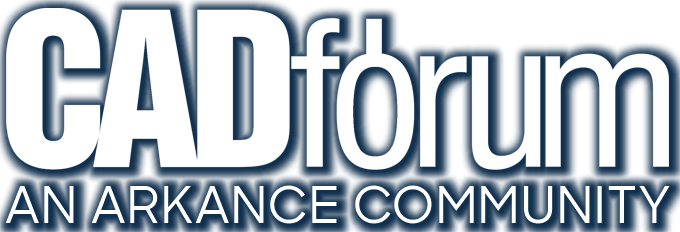 Discussion forum
Discussion forum
?CAD discussions, advices, exchange of experience
 CAD discussion forum - ask any CAD-related questions here, share your CAD knowledge on AutoCAD, Inventor, Revit and other Autodesk software with your peers from all over the world. To start a new topic, choose an appropriate forum.
CAD discussion forum - ask any CAD-related questions here, share your CAD knowledge on AutoCAD, Inventor, Revit and other Autodesk software with your peers from all over the world. To start a new topic, choose an appropriate forum.
Please abide by the rules of this forum.
|
Post Reply 
|
| Author | |
AliveInTheLab 
RSS robots 
Joined: 20.Nov.2009 Status: Offline Points: 425 |
 Topic: POV Dispatch: Let's Get Small: Big Breakthroughs in the World of the N Topic: POV Dispatch: Let's Get Small: Big Breakthroughs in the World of the NPosted: 03.Apr.2014 at 04:00 |
|
The POV Dispatch is our Autodesk internal newsletter, published monthly, where we discuss the big ideas that are important to us and our customers. It is published by our Corporate Strategy & Engagement (CS&E) team of which Autodesk Labs is a part. In addition to articles authored by members of our CS&E team, we take guest submissions. We were thrilled to get a write-up by Autodesk Distinguished Research Scientist Andrew Hessel. I thought I would share it with you. Let's Get Small: Big Breakthroughs in the World of the Nanoscale by Andrew Hessel, Distinguished Research Scientist First, the Landscape Everyone's talking about design today, but there's still one thing about design that many people don't realize: it can be done on an extremely small scale. In fact, the nanoscale. The world that I spend a lot of time thinking about is invisible to most people. It exists far below what a conventional microscope can perceive. In fact, it can only be clearly seen at the level of the electron microscope, or the atomic force microscope. Next, the Inhabitants Many objects exist at this scale. They include single cell-organisms, like bacteria. Bacteria are complex, free-living organisms. They range in size, but one of the most familiar types of bacteria, E. coli, measures roughly 5 microns across, or about 5,000 nanometers. Bacteria are all around us in the world and plenty live on us and inside of us. They are so plentiful that their cells outnumber our own cells by a factor of 10, totaling about 380 trillion cells of bacteria in our bodies. In fact, the human body is about 2-3 pounds of bacteria by weight. The Human Microbiome Project was launched in 2005 to produce a map of our bacteria. Viruses are even smaller; there are millions or billions of virus species. No one knows for sure how many there are, but we know that the vast majority of them are harmless to humans, and that their sizes vary greatly. For example, the viruses that cause the common cold are about 30 nanometers in size, while pandoraviruses are closer to 1,000 nanometers . Viruses aren't alive in the conventional sense, because they need a host cell in which to replicate. Let's Go Even Smaller There are many things that are even smaller than bacteria and viruses, for example:
Basically, the nanoscale world, though invisible, is teeming with diversity, activity, and complexity. Designing the World of the Infinitesimal ‚ÄĒ and Autodesk's Role Here's the surprising part about this world of tiny things: despite the small size and complexity of nano-biological systems, they can be manipulated with precision. This is because biology is built from the bottom up, and it has a digital programming language (DNA), and software tools can assist designers with their more sophisticated genetic designs. Autodesk has not traditionally created tools for designers working at this scale, or with these self-assembling materials. In¬†2012, after more than two¬†years of background research, Autodesk's Bio/Nano Programmable Matter¬†(BNPM) group was established in the Office of the CTO¬†(OCTO) to explore the commercial opportunities of this evolving realm. This team of 20¬†developers and scientists led by Senior Principal Research Scientist Carlos¬†Olguin. Enter Project Cyborg This group is now developing a web-based platform specifically for Bio/Nano called Project¬†Cyborg ‚ÄĒ shorthand for Cybernetic Organism, or the synergistic intersection of living and non-living materials. The platform includes a CAD shell, physics and biophysics engines, and it also supports cloud computation. A number of speculative applications are also being developed on the platform to demonstrate to scientists how it might potentially be used. One major goal of Cyborg is the democratization of bio-nano design. We're doing this in three ways:
Printing Out Life One of these printers is called a bio-printer: a 3D¬†printer that deposits "bio-inks" instead of plastic or other inert materials, as traditional 3D¬†printers do. Bio-inks are solutions of living cells that can be precisely deposited in an additive way. San Diego-based Organovo Inc., a leader in this field, uses this technology to make synthetic liver samples for drug screening, and also synthetic blood vessels ‚ÄĒ and it is even working on printing entire organs that are suitable for transplant. We are working closely with Organovo to make this work easier ‚ÄĒ if not fully automated. Another powerful printer is the DNA synthesizer: basically, it's a 3D¬†printer for the DNA¬†molecule. UCSF-based collaborator Shawn Douglas uses this DNA as a structural material to craft precision nanoscale objects, including "robots" that can recognize and kill cancer cells, one at a time. BNPM team member Joseph¬†Schaeffer is an expert supporting this work. Other groundbreaking scientists, like Craig¬†Venter and George¬†Church, and even the students in the iGEM synthetic biology program are using synthetic DNA as a programming language, and in the process sprouting an entirely new branch from the tree of life, which we dub synthetica. The potentials here are so vast that they include the engineering of all life, up to and including our own species. Let's Get Viral Currently the capabilities of DNA¬†printers are still quite modest, and the price per base pair (bp) is still quite high, anywhere from¬†$.20¬†to¬†$1¬†per¬†bp. For this reason I have focused my own work on engineering organisms with the smallest genomes: viruses, which have genomes that range from¬†3,000¬†bp¬†to¬†about¬†1¬†million¬†bp. Viruses are, in a weird way, consistent with Autodesk's core capabilities, because they are the biological equivalent of shrink-wrapped software. The virus capsid ‚ÄĒ the protein shell that serves as the container for the viruses DNA and RNA ‚ÄĒ ultimately dictates which host cells (i.e., "computers") a virus can "run on." Autodesk BNPM members Jackie¬†Quinn, Merry¬†Wang, and I, along with our external partners, have been working to make synthetic viruses easy to design and print. This opens up a range of possible applications because viruses have diverse functions in nature, many of which have been used by scientists to create practical applications, including vaccines, diagnostic tools, and even battery electrodes. Even cancer fighting viruses have been engineered, some of which are already in late-stage clinical trials. To gain some hands-on knowledge of this new realm, we've been working with a phage, a virus that infects the E.¬†coli bacterium. It's small (5,386¬†bp), harmless to humans, and synthetic variants of it have been made and researched for over a decade. The tool we've been using for this work is called the Virus¬†Design¬†Studio; it's still very basic, but it includes DNA editing software as well as automated biosecurity features, including the addition of a digital signature. It can be used to 3D¬†print a plastic model of the phage or, just as easily, the biological virus itself. Our goal is to first automate and accelerate the end-to-end virus design process, and to then explore a diverse range of applications for the new process. Using today's DNA synthesis technology, 3D¬†printing a virus can take 2¬†weeks, but some researchers have already shown that it can actually be done in about 3¬†days. The trend is clear: doing work like this is going to cost much less in the near future, and take less time. Bio/Nano: Somewhere We Can Boldly Go... By combining advanced bio/nano design software with this latest generation of amazing 3D¬†printers, there's a very real opportunity for Autodesk to play a key role in the next-generation biotechnology industry ‚ÄĒ turning makers into drug-makers ‚ÄĒ and much, much more! Developments in this field could bring about a creative explosion of R&D in terms of treating cancer, organ transplantation, etc. The opportunities are endless and the surface has barely been scratched. Thanks Andrew. I really enjoyed how your article covers this complex topic in plain English with small words. This information will help me greatly when I cover the DNA origami exhibit on the Autodesk Gallery tour. With apologies to Steve Martin, getting small is alive in the lab. Go to the original post... |
|
|
It's Alive in ihe Lab - Autodesk Labs blog by Scott Sheppard
|
|
 |
|
Post Reply 
|
|
|
Tweet
|
| Forum Jump | Forum Permissions  You cannot post new topics in this forum You cannot reply to topics in this forum You cannot delete your posts in this forum You cannot edit your posts in this forum You cannot create polls in this forum You cannot vote in polls in this forum |
This page was generated in 0,094 seconds.
![CAD Forum - tips, tricks, discussion and utilities for AutoCAD, Inventor, Revit and other Autodesk products [www.cadforum.cz] CAD Forum - tips, tricks, discussion and utilities for AutoCAD, Inventor, Revit and other Autodesk products [www.cadforum.cz]](/common/arkance_186.png)









 POV Dispatch: Let's Get Small: Big Breakthroughs in the World of the N
POV Dispatch: Let's Get Small: Big Breakthroughs in the World of the N
 Topic Options
Topic Options


